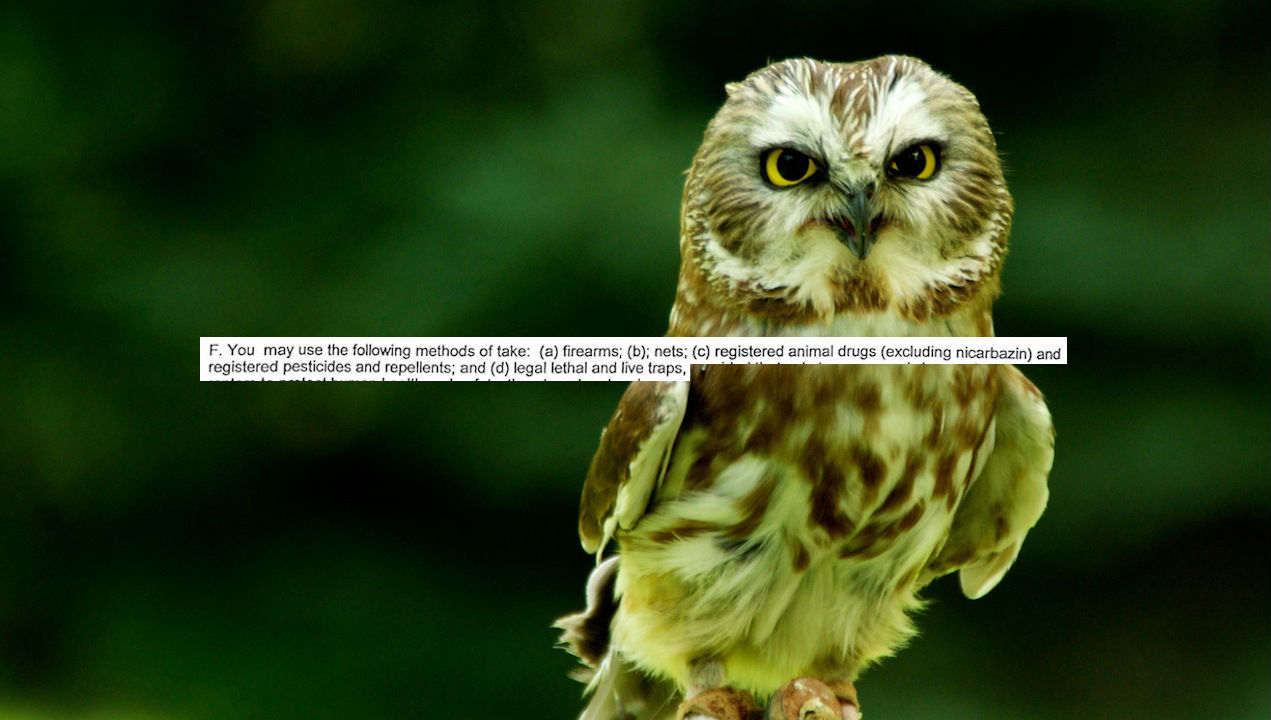The U.S. Fish and Wildlife Service has issued a permit to the U.S. Department of Agriculture to kill over 90 species of bird within New York State this year, ANIMAL has learned. The birds slated for killing include owls, herons, hawks, and woodpeckers, in addition to the slaughter of Canada geese that has been widely publicized.
 The permit was uncovered as part of a Freedom of Information Act request that also yielded permits to kill geese for the Nassau County Department of Public Works, a number of Long Island parks, and businesses including Stony Brook University and Belmont Park.
The permit was uncovered as part of a Freedom of Information Act request that also yielded permits to kill geese for the Nassau County Department of Public Works, a number of Long Island parks, and businesses including Stony Brook University and Belmont Park.
The discovery comes in the wake of widespread controversy over the USDA’s widespread and continual killing of geese in New York–a practice that advocates say helps prevent air strikes, but critics say is both ineffectual and inhumane.
“Permits are issued on case by case basis and depending on the situation, some protected migratory birds may be listed on a permit,” Alicia King, Communications Coordinator for the FWS’s Migratory Bird Program, told ANIMAL. “Our permit officers rarely issue p
“Take” is a word the FWS uses to mean “harass, harm, pursue, hunt, shoot, wound, kill, trap, capture, or collect, or to attempt to engage in any such conduct,” as described in the Endangered Species Act. Per Mrs. King’s comment, the USDA’s permit allows for the killing of 40 each of five different species of woodpecker.
Last year, Ron Merritt, the former chief of the Air Force’s Bird Aircraft Strike Hazard and president of a company that specializes in preventing air strikes, came out against the killing of birds. “Killing 1,000 geese really isn’t going to do anything,” Merritt said at the time. “If you kill them, nature will fill that vacuum and a new species will pop up in its place. We’re better off if we don’t build these things near wildlife areas like wetlands to begin with.”
Carol Bannerman, a representative of the USDA, explained that “lethal control” is most often used in aviation areas to protect against bird strikes, and emphasized that not every bird listed on the group’s permit may be killed.

“Certainly the numbers in the permit represent the maximum that could be taken,” Bannerman said. “It’s not a quota. The annual reports of the numbers taken would show much lower numbers for most of the species.”
Richard Brummel, the environmental activist who obtained the papers, is both frightened and perplexed by what he found. “I hope that pressure can be brought to bear to stop these killings,” he said. “It is shocking that beyond the intolerance for geese because of their droppings, somehow we now are killing mallard ducks, egrets, owls, woodpeckers, osprey and other animals that seem to be beautiful parts of nature to me and to almost everyone else I have ever encountered.”
The language in many of the permits, including the USDA’s, states that birds can be “taken” in order to “relieve or prevent injurious situations impacting human health or safety, natural resources, agriculture, and public or private property.” All emphasize the use of “non-lethal management techniques” before resorting to killing birds. The USDA is also allowed to destroy the eggs of a host of birds, including Canada geese, osprey, swallows, herons, ducks, vultures, and woodpeckers.
Brummel has organized two petitions to stop the practice.
See the full text of the USDA permit below, and the 13 FOIA-obtained permits here.



(Photo: CKoontz/Flickr)



